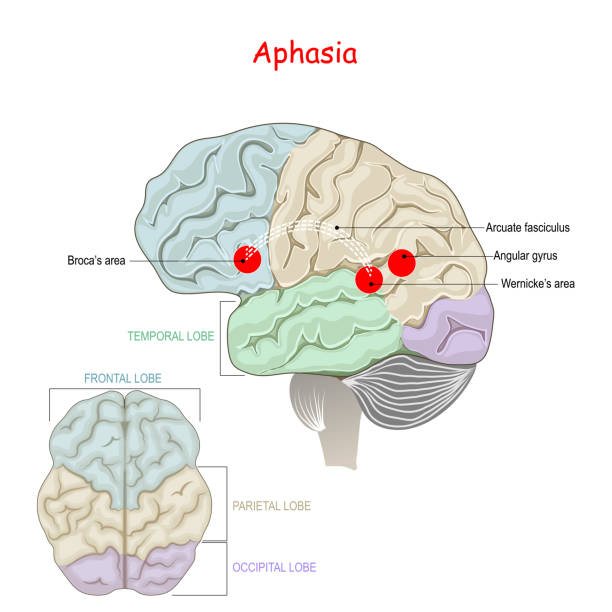What is Aphasia?
Aphasia is a disorder that results from damage to the part of the brain that controls our speech. Stroke is the most common cause of aphasia, followed by head injury, brain surgery, or it may happen slowly because of a brain tumour or a neurological disease.
What are the types of aphasia?
It is divided into two broad categories, namely, fluent and nonfluent. The most common type of fluent aphasia is Wernicke’s aphasia which results due to damage in the temporal lobe of the brain. Their patients can construct long sentences and words, but they don’t add any meaning to their speech. For example, a person with Wernicke’s aphasia may say something like: ‘That pink over there you know smitehnor and coslupted with all the loss.’
The most common type of nonfluent aphasia is Broca’s aphasia which results from damage to the front lobe of the brain. People with Broca’s aphasia often understand speech but fail to produce it. They frequently omit certain words from their sentences. For instance, they might say a sentence like ‘we go park’ meaning ‘We go to the park’ or ‘I icecream want give Sheena’ meaning ‘I want to give icecream to Sheena’
There are several other types of aphasia, each resulting from damage to different language areas in the brain. Some people may have difficulty pronouncing or repeating words (conduction aphasia). Others may not be able to name objects despite knowing their name and function (anomic aphasia).
What are the causes of aphasia?
Aphasia is caused by any damage to one or more areas of the brain that are responsible for language. The most common cause is Stroke. A brain stroke is a result of a blood clot or a leaking or burst vessel that cuts off blood flow to part of the brain. This causes the brain cells to die because of no blood and oxygen supply. Other reasons that cause brain damage are severe blows to the head, gunshot wounds, brain infections, brain tumours, and progressive neurological disorders, such as Alzheimer’s disease.
How is aphasia diagnosed?
Following a brain injury, individuals go under a magnetic resonance imaging (MRI) or computed tomography (CT) scan to find the brain injury and its location. Physicians make individuals go under a test for their speech, ability to understand, name objects and converse. If the doctor suspects aphasia, then the patient has to go under speech therapy from a speech-language pathologist for further assessment. The person’s ability to speak, express ideas, converse socially, understand language, and read and write are all evaluated in detail.
How is aphasia treated?
Most patients observe dramatic improvements in their speech and language in the first few months, without any treatment. However, some aphasia remains after the recovery period. For further recovery, the person has to under speech-language therapy which helps them gain their communication ability back. These include exercises such as:
- Reading and writing.
- Listening and repeating.
- Expressive language skills (facial expressions and gestures to communicate).
- Following directions.
Aphasia therapy
aims to improve a person’s ability to communicate by helping them to utilise their remainder language abilities and restore as much as possible. It helps them learn other methods of communication, such as gestures, pictures, or the use of electronic devices. Individual therapy focuses on a person’s specific needs, while group therapy offers the opportunity to use new communication skills in a small-group setting.
Family involvement is also a crucial part of aphasia therapy. It helps families to understand new ways of communicating with their loved ones.

